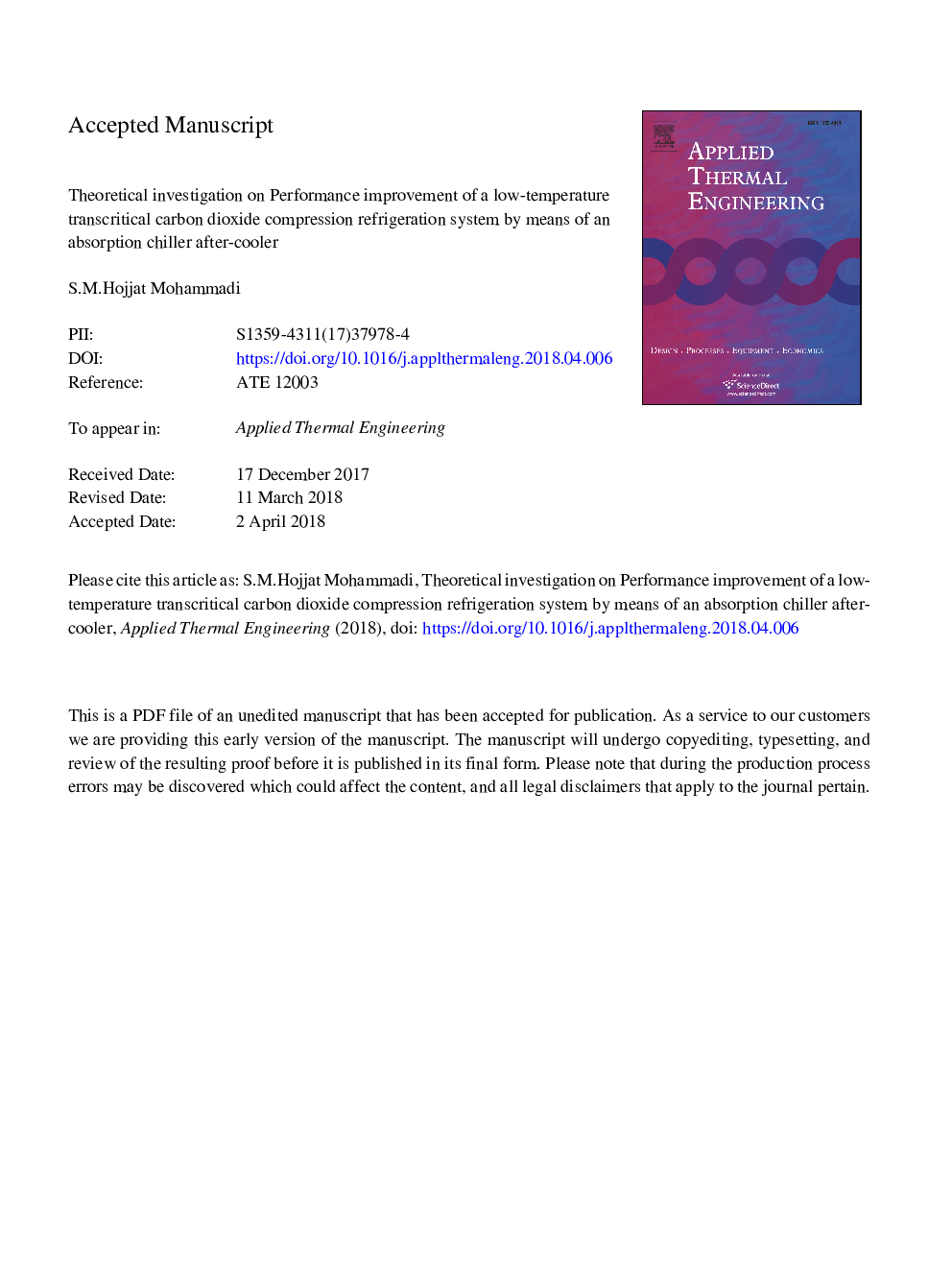| Article ID | Journal | Published Year | Pages | File Type |
|---|---|---|---|---|
| 7045244 | Applied Thermal Engineering | 2018 | 70 Pages |
Abstract
A Transcritical Carbon dioxide Compression (TCC) refrigeration system is a suitable tool to provide low-temperature refrigeration, but with a low COP. To improve the performance of a TCC, different combinations of Liquid Suction Heat Exchanger (LSHE), after-cooler and two-stage compression are embedded into the system configuration. The cooling load of the after-cooler is provided by an Absorption Chiller (ABSC) and the required heating energy to run the ABSC is recovered from the hot refrigerant leaving the compressors of the TCC. Eleven modified configurations are proposed and modeled in detail by EES software and energy and exergy analyzes are performed for each configuration. The results showed that the two-stage compression is a suitable method to upgrade the TCC system performance from both first and second laws of thermodynamics view point. The COP of a typical two-stage TCC is calculated to be 207% higher than its single-stage counterpart, in an evaporator temperature of â50â¯Â°C. It is also concluded that the combination of a two-stage compression TCC and a single-effect LiBr ABSC, performs with the highest performance. This combination increases the TCC system performances for about 4 and 2 times compared to single-stage and two-stage TCCs, respectively. A parametric study also revealed that well-calculated operating conditions are fundamental in design of TCCs to gain the highest performance.
Keywords
Related Topics
Physical Sciences and Engineering
Chemical Engineering
Fluid Flow and Transfer Processes
Authors
S.M. Hojjat Mohammadi,
